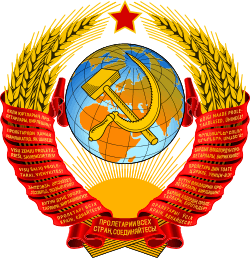Ideological repression in the Soviet Union
| Mass repression in the Soviet Union |
|---|
| Economic repression |
| Political repression |
| Ideological repression |
| Ethnic repression |
Ideological repression in the Soviet Union targeted various worldviews and the corresponding categories of people.
Ideological repression in arts
Until the late 1920s various forms of artistic expression were tolerated. However the increase of the scope of the Soviet political repression, marked by the first show trial, the Shakhty Trial, brought into the focus of Bolsheviks the question whether "bourgeois intelligentsia", including workers of culture and arts, can be loyal to the Soviet power and can be trusted. As an early step was an instruction to the Russian Association of Proletarian Writers "to scourge and chastice [literature]" in the name of the Party", i.e., effectively encouraging censorship of literature on ideological grounds. Among the first targets were Yevgeny Zamiatin and Boris Pilnyak.[1]
Soon the concept of Socialist Realism was established, as the officially approved form of art, an instrument of propaganda, and the main touchstone of ideological censorship.
Repression of religion
Ideological repression in science
References
- ↑ Rudova, Larissa (1997). Understanding Boris Pasternak. Columbia: University of South Carolina Press. p. 64. ISBN 1-57003-143-6.
